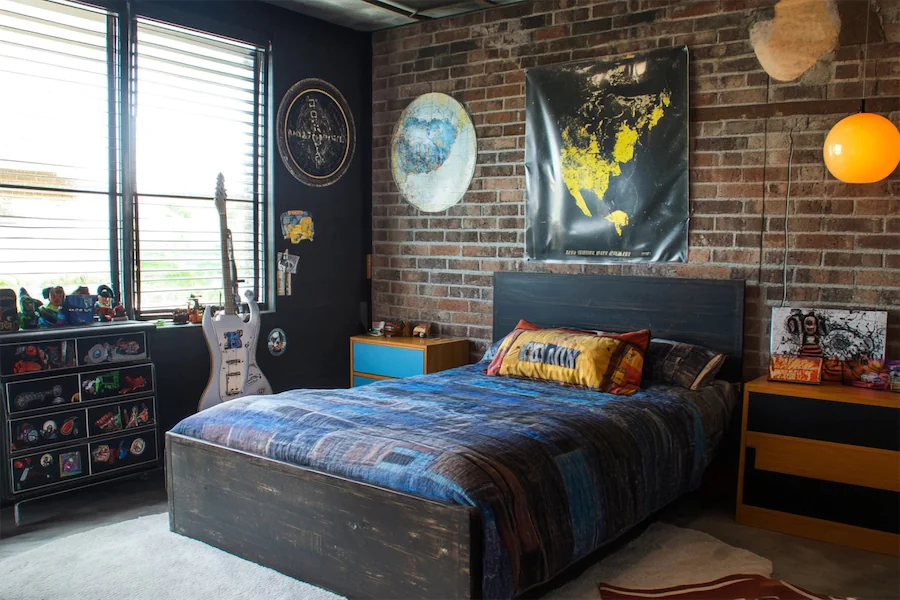Designing an industrial-style kid’s room merges the raw, edgy elements of industrial design with the playful and functional needs of a child’s space. This approach creates a unique environment that is both stylish and conducive to a child’s growth and creativity.
Introduction to Industrial Kid’s Rooms
Industrial design is characterized by the use of raw materials, exposed structures, and a minimalist aesthetic. Incorporating this style into a child’s room involves balancing these rugged elements with warmth and practicality to ensure the space is inviting and suitable for a child.
History and Origins of Industrial Kid’s Rooms
The industrial design style originated from the conversion of old factories and warehouses into living spaces, emphasizing utilitarian materials and structures. Applying this aesthetic to children’s rooms is a contemporary trend that adapts the core principles of industrial design to create spaces that are both functional and visually appealing for kids.
Key Features of Industrial Kid’s Rooms
- Exposed Materials: Utilizing elements like brick walls, metal pipes, and wooden beams to add character and an authentic industrial feel to the room.
- Neutral Color Palette: Incorporating shades of gray, black, and brown to establish a versatile backdrop, allowing for the addition of colorful accents through decor and toys.
- Functional Furniture: Choosing pieces that are both practical and align with the industrial aesthetic, such as metal-framed beds, wooden desks, and storage units with a rugged appeal.
- Creative Lighting: Incorporating fixtures like pendant lights with exposed bulbs or repurposed materials to enhance the industrial vibe while providing adequate illumination.
Applications of Industrial Kid’s Rooms
- Sleeping Area: A metal-framed bed paired with neutral bedding can serve as a focal point, complemented by a backdrop of an exposed brick or faux brick wall to enhance the industrial theme.
- Study Space: A sturdy wooden desk with metal accents provides a durable and stylish area for homework and creative projects, fostering an environment conducive to focus and learning.
- Play Zone: Open spaces with durable flooring, such as polished concrete or reclaimed wood, offer a practical area for play. Incorporating storage solutions like metal lockers or wooden crates helps keep toys organized and the room clutter-free.
Considerations When Designing an Industrial Kid’s Room
- Safety: Ensure all materials and furniture are child-friendly, with smooth finishes and non-toxic paints. Avoid sharp edges and secure heavy items to prevent accidents.
- Comfort: Balance the rawness of industrial design with soft textiles, such as area rugs, cushions, and curtains, to create a cozy and inviting atmosphere for the child.
- Personalization: Incorporate elements that reflect the child’s interests, such as wall art, posters, or themed bedding, to make the space uniquely theirs while maintaining the industrial aesthetic.
Conclusion
An industrial-style kid’s room offers a distinctive blend of rugged charm and functional design. By thoughtfully integrating industrial elements with child-friendly features, you can create a space that is both stylish and supportive of your child’s development and creativity.
